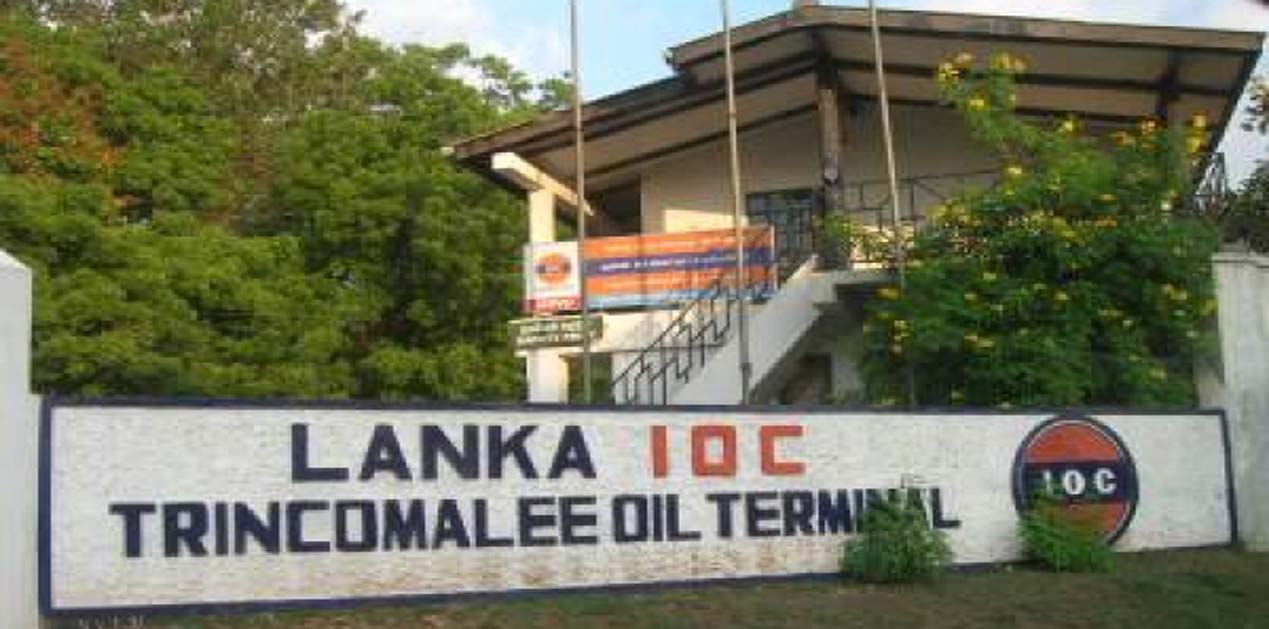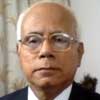Conflicting reports have been emanating in the public domain on Sri Lanka disengaging India from the Trincomalee oil tank farm development and operational venture. Sri Lanka`s Energy Minister, Udaya Gamanapila is reported to have stated recently that his country is proud to re-acquire this project facility. The Indian High Commission in Sri Lanka has however denied that the joint venture is being ended. This development was not unexpected. After stalling Indian participation in the Colombo harbour container terminal project, a trilateral Sri Lanka - India-Japan investment venture, the Trincomalee outcome should have been anticipated. The point to ponder is on whether it was necessary for India to continue with the Trincomalee venture in its present form, based on a bilateral agreement of 2003 providing for the oil tank farm to be with the Indian Oil Corporation (IOC) subsidiary, the Lanka IOC, on a 35-year lease on annual payment of $ 100,000.
India`s engagement with Sri Lanka for development of the 101-oil tank storage farm project, dates back to the India-Sri Lanka Accord of 1987. The understanding on the Trincomalee project was in the context of the tumultuous developments of the late 1980s with the island country facing an existential threat and spillover political impact on India, with the then Prime Minister Rajiv Gandhi and President Junius Jayawardene at the helm of their respective governments. New Delhi had an eye on strategic developments in the Indian Ocean littoral, particularly on the then disposition of military forces and the maritime routes touching the island country. There was an apparent need for an Indian foothold in Trincomalee with its deep -sea natural harbour in Sri Lanka`s Eastern Province. These factors had induced the Rajiv Gandhi government and the successor Indian governments to continue India`s engagement in the development and operationalisation of the oil tank farm project. During the Maithripala Sirisena`s presidency in Sri Lanka, an MOU was arrived at in 2017 between the two governments, for operating 15 oil tanks by the Indian Oil Corporation (IOC) in the lower tank farm zone, and by a joint venture of Ceylon Petroleum Corporation and the Lanka IOC, a subsidiary of the IOC, in the upper portion consisting of the remaining 84 oil tanks in the upper tank region, which are in good condition since the British left, but require some refurbishment to make the tanks usable as per appropriate technical and commercial standards.
However, the oil tank farm`s intrinsic utility does not seem to have been adequately or realistically appreciated over the years. A moot point is whether the storage facility consisting of nearly 100 storage tanks of 12250 KL capacity, will help both India and Sri Lanka, and particularly the latter, to guard against vagaries of future international supplies. It is not clear whether both the countries have developed a joint vision on utilizing the facility in concert with the international oil companies which would transporting the oil to the oil tank farm and out to other destinations in Asia. Not much has been stated or elucidated in these respect, either by Colombo or New Delhi. Indian Prime Minister Narendra Modi had however stated during his last visit to Sri Lanka that India would like to see the Trincomalee develop as a regional petroleum hub.
Without a clearly outlined policy framework enmeshing strategic objectives of the two countries, a fruitful and mutually beneficial and long-term conjoint policy could not have been expected. Apart from these aspects, the vagaries of internal politics in Sri Lanka particularly, the clamour – internal politics induced, for more domestic control on the project, had to be taken into account. Now, it appears that the Gottabaya Rajapakshe presidential government is moving towards eliminating India from the oil tank farm project, at least in regard to downsizing Indian stake in the project and control in the management and utilization of the upper oil tank segment. Sri Lankan government must have assessed the likely impact of such action, both strategically and economically.
India should not worry much on these developments because, economically, the storage facility is not very essential to the country from the economic point of view. With three strategic petroleum reserve facilities in place in Mangalore, (Karnataka), Vizag (Andhra Pradesh) and Padur (Karnataka) with a total of 5.33 million metric ton crude storage capacity and a fourth reserve coming up in Chandikhole in Orissa, India has reasonable level of reserve crude petroleum storage and emergency stock back-up. The Trincomalee facility was more of a transit storage facility, to benefit the countries which were substantially dependent on Middle East supplies and the oil transporting companies and also had limited internal stockholding capacity. India`s concern may be only to the extent any hostile of competing country like China, gaining a foothold in the project or taking sole control of its operations and management. After weighing its overall interests and good relations with India, the Sri Lankan government may not hand over the Trincomalee oil tank farm to any country inimical towards India. However, New Delhi will have to be vigilant in this regard. Government of India may continue to strive for some stake as a joint partnership on the project through a special purpose vehicle associating one or two Indian oil marketing companies in its operations.
India should work out an economical arrangement with Sri Lanka which is viable for the latter, regarding development of an oil transportation network from Trincomalee to different parts of the island country. In addition, India could help Sri Lanka in augmenting and modernizing its crude refining capacity and downstream facilities. Some of the petroleum products from the refined crude stored at the oil tank farm could be purchased by India and even jointly marketed to South and ASEAN countries. A techno-commercial cooperation framework on these lines could be an attractive option for Colombo. It depends on how New Delhi conceives and manages such a network based on a long-term political perspective.
The strategic disposition of Trincomalee cannot be ignored. However, India should also view the project as a means to participate in Sri Lanka`s development.
(The paper is the author’s individual scholastic articulation. The author certifies that the article/paper is original in content, unpublished and it has not been submitted for publication/web upload elsewhere, and that the facts and figures quoted are duly referenced, as needed, and are believed to be correct). (The paper does not necessarily represent the organisational stance... More >>
Image Source: https://www.petrolworld.com/media/k2/items/cache/33748bbf195a2cc75d27051533ed1085_L.jpg










Post new comment